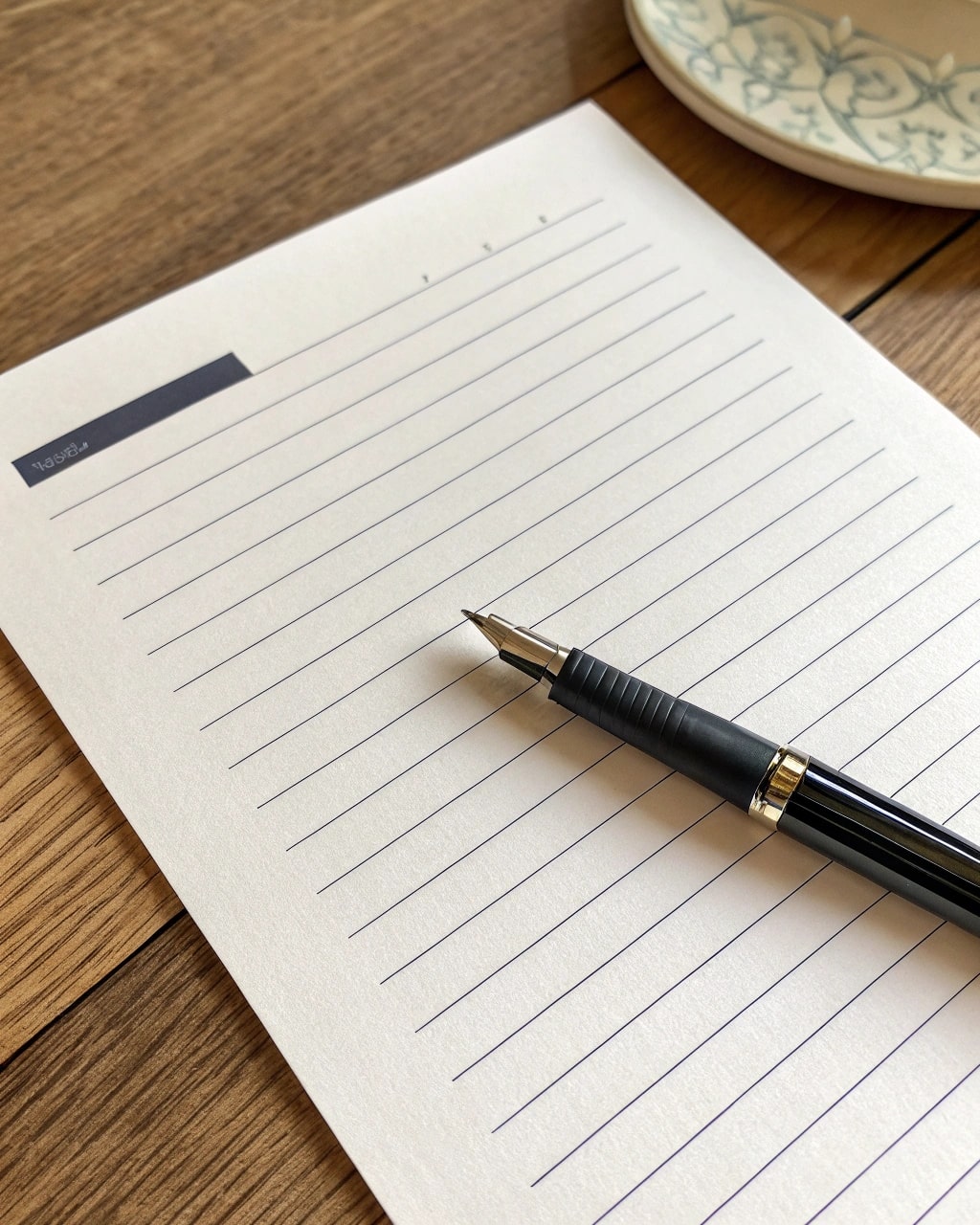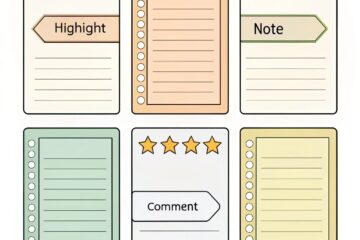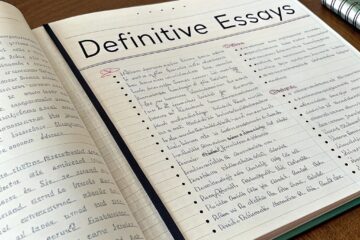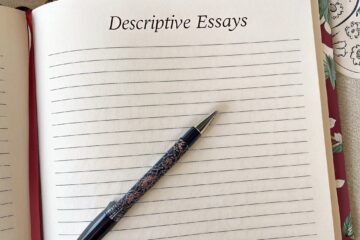Write a Reaction Paper: Your Complete Guide + Examples

Ever been assigned a task to write a reaction paper and felt a bit lost? You’re not alone. Many students find these assignments tricky at first. However, a reaction paper is a fantastic way to engage deeply with a text, film, or experience. Unlike a simple summary, it asks for your thoughtful personal responses and critical analysis. This comprehensive guide will walk you through everything you need to know to write a reaction paper that truly shines. Consequently, you’ll feel more confident tackling these assignments.
Reaction papers help you develop critical thinking skills. They also allow you to connect new information with your existing knowledge. Furthermore, they give you a voice to share your unique perspective. So, let’s dive into how you can master this type of academic writing.
Understanding the Core: What Exactly is a Reaction Paper?
Before you can write a reaction paper, it’s crucial to understand its purpose. Essentially, a reaction paper requires you to respond to a specific source. This source could be a book, an article, a film, a lecture, or even an event. Your goal is to move beyond summarizing the material. Instead, you will analyze it and share your informed opinions. Importantly, these opinions must be well-supported by evidence from the source and logical reasoning.
Think of it as a dialogue. The author or creator presents ideas. Then, you respond with your thoughts, interpretations, and evaluations. For instance, you might discuss how the source made you feel. You could also explain whether you agree or disagree with its points and why. Moreover, you can connect its themes to broader concepts or your own experiences. This process makes it a unique and personal academic task.
Pre-Writing: The Foundation to Write a Reaction Paper Successfully
The journey to write a reaction paper effectively begins long before you type the first word. Solid preparation is key. Therefore, investing time in these initial steps will make the actual writing process much smoother.
1. Clarify the Assignment Prompt: First, carefully read your assignment guidelines. What specifically does your instructor want you to react to? Are there specific questions you need to address? Also, note the required length, formatting style (like APA or MLA), and the due date. Understanding these parameters from the outset prevents misunderstandings later. If anything is unclear, don’t hesitate to ask your instructor for clarification. This proactive approach is always beneficial.
2. Engage Actively with the Source Material: Next, you need to consume the source material thoughtfully. This isn’t about passive reading or watching. Instead, engage actively. * For texts (articles, books): Read through the material once to get a general idea. Then, reread it more slowly. Highlight key passages. Write notes in the margins. Ask questions as you go. Identify the main arguments, evidence, and conclusions. * For media (films, lectures): Pay close attention. Take notes on significant scenes, dialogues, or points. You might need to watch or listen multiple times. What emotions does it evoke? What techniques does the creator use?
3. Jot Down Your Initial Reactions and Questions: As you engage with the source, start noting your immediate responses. * What are your first thoughts or feelings? Surprise? Agreement? Confusion? Anger? What questions arise in your mind? Does it challenge your existing beliefs? Does it remind you of anything else you’ve read, seen, or experienced? These raw notes are gold. They form the basis of your unique reaction. Subsequently, you can refine these initial thoughts into more structured arguments.
4. Identify Key Themes and Points for Discussion: From your notes, identify recurring themes or particularly striking points in the source. Also, note which of your reactions are strongest or most interesting. You won’t be able to discuss everything. Therefore, select a few key areas where you can offer insightful commentary. This selection process is vital for a focused paper.
Structuring Your Masterpiece: How to Organize When You Write a Reaction Paper
A well-structured paper is easier to read and understand. When you write a reaction paper, a clear organization will guide your reader through your thoughts logically. While there’s some flexibility, a common structure works well for most reaction papers.
I. Introduction (Typically 1 paragraph) Your introduction should grab the reader’s attention. It also needs to provide necessary context. Finally, it must present your overall reaction in a thesis statement.
- Hook: Start with an engaging sentence. This could be a relevant question, a striking observation, or a brief anecdote related to the source’s theme.
- Source Information: Clearly identify the source material. Include the title, author/creator, and publication date or context. For example, “In John Doe’s 2023 article, ‘The Future of AI,’ published in Tech Today…”
- Brief Summary (Optional but often helpful): Sometimes, a very concise (1-2 sentences) summary of the source’s main point is useful here. However, save the detailed summary for the next section if required.
- Thesis Statement: This is the most crucial part of your introduction. Your thesis statement should clearly state your main reaction or overall argument about the source. For instance, “Doe’s article offers a compelling, albeit somewhat alarmist, view of AI’s potential, particularly regarding job displacement.” This shows you are ready to write a reaction paper with a clear focus.
II. Summary of the Source (Typically 1-2 paragraphs) After the introduction, provide a concise summary of the source material. This section demonstrates your understanding of the work you are reacting to.
- Objectivity is Key: Present the author’s main points, arguments, and conclusions fairly and accurately. Avoid injecting your own opinions here. That comes later.
- Brevity: Keep it brief. The summary should not dominate your paper. It’s just there to give context to your readers who may not be familiar with the source. Focus only on the aspects relevant to your reaction. For example, if you’re writing a report writing service style summary, stick to the facts.
- Key Information: Include the most important information that your reader needs to understand your subsequent reaction. This helps set the stage for your analysis.
III. Your Reaction and Analysis (The Core of Your Paper: Multiple Paragraphs) This is where you truly write a reaction paper. This section is the longest and most important. Here, you will elaborate on your thesis statement. You will present your specific reactions, supporting them with evidence from the source and your own reasoning. Organize this section thematically. Each paragraph should focus on a distinct aspect of your reaction.
Here are some angles to consider for your reaction paragraphs:
- Agreement/Disagreement:
- Do you agree with the author’s points? Why? Provide specific examples from the source.
- Do you disagree? On what grounds? Is the evidence weak? Is the logic flawed? Explain your counter-arguments clearly. Perhaps the author’s perspective on a topic like climate change in 2025 differs significantly from current consensus.
- Interpretation and Analysis:
- What do you think the author is trying to achieve? Were they successful?
- How does the source use evidence, language, or artistic techniques? Are they effective?
- Are there any underlying assumptions or biases in the work?
- Connections:
- How does the source relate to concepts discussed in your course? Be specific.
- Does it connect to your own experiences, observations, or other readings? Explain these connections. This personal touch can make your reaction paper very engaging.
- Does it reflect broader societal issues or trends?
- Evaluation:
- What are the strengths of the source? What are its weaknesses?
- Is the work convincing? Original? Thought-provoking? Important?
- What is the overall value or contribution of this work?
Important Tips for Your Reaction Section: * Use Topic Sentences: Start each paragraph with a clear topic sentence. This sentence should state the main point of that paragraph’s reaction. * Provide Evidence: Always back up your claims with specific examples or quotations from the source. Don’t just say, “The author’s argument was weak.” Show why it was weak, using evidence. * Explain Your Reasoning: Clearly explain how the evidence supports your point. Don’t assume the reader will make the connection. * Maintain Focus: Ensure each paragraph contributes to your overall thesis. Avoid going off on tangents. This focus is vital when you write a reaction paper.
Sometimes, students feel overwhelmed by the depth required. If you’re working on a larger academic piece, like a capstone, remember that the analytical skills honed here are invaluable. For support on bigger projects, services like professional capstone project help can be a resource.
IV. Conclusion (Typically 1 paragraph) Your conclusion should wrap up your thoughts neatly. It provides a sense of closure for the reader.
- Restate Your Thesis (in different words): Briefly remind the reader of your main reaction or argument.
- Summarize Main Reaction Points: Briefly touch upon the key points you made in your reaction section. This reinforces your analysis.
- Broader Significance/Final Thought: End with a final thought-provoking statement. Why does this reaction matter? What are the broader implications of the source or your interpretation of it? Avoid introducing new information here. For instance, you might reflect on how the source changed your perspective.
Examples: Seeing How to Write a Reaction Paper in Action
Abstract guidance is helpful. However, concrete examples can make the process much clearer. Let’s look at some snippets.
Example: Introduction Snippet Source: A documentary film titled “The Social Dilemma.” Focus Keyword: write a reaction paper
“The 2020 documentary ‘The Social Dilemma’ paints a stark picture of social media’s impact on society. It argues compellingly that these platforms, designed for profit, actively manipulate user behavior and contribute to societal division. While the film’s warnings are undeniably crucial, this reaction paper will argue that it occasionally oversimplifies the complex user-platform dynamic. Nevertheless, it effectively provokes essential conversations about digital well-being, a key step when learning how to write a reaction paper on such impactful media.”
Example: Reaction Paragraph Snippet (Focusing on Agreement with a Point)
“One particularly resonant aspect of ‘The Social Dilemma’ is its exploration of how platform algorithms can create echo chambers. The film vividly illustrates this with examples of users being fed increasingly extreme content. Consequently, their worldview becomes more polarized. I strongly agree with this assessment. Indeed, I have observed similar patterns within my own social media feeds. For example, after engaging with a few articles on a specific political viewpoint, my ‘recommended for you’ sections became almost exclusively populated with similar content. This firsthand experience supports the film’s claim. It highlights the urgent need for greater algorithmic transparency.”
Example: Reaction Paragraph Snippet (Focusing on a Critique)
“However, the documentary sometimes falls short in acknowledging user agency. While it powerfully demonstrates manipulative design, it risks portraying users as entirely passive victims. For instance, the film doesn’t deeply explore the various ways individuals consciously curate their feeds or use media literacy skills to counteract misinformation. This omission is significant because it could lead to a sense of helplessness. A more nuanced discussion might have considered both the platforms’ responsibilities and the users’ capacity for critical engagement. Therefore, while impactful, this aspect could have been strengthened.”
These examples show how to integrate reactions with evidence and explanation. If you are tasked with a specific type, like an expository essay, the goal is explanation, but reaction papers demand your personal, critical take.
Style, Tone, and Language: Crafting Your Voice
When you write a reaction paper, your voice is important. Here’s how to strike the right balance:
- First-Person Perspective: It’s generally acceptable (and often expected) to use “I” in a reaction paper. For example, “I believe that…” or “I found the author’s argument to be…” This emphasizes that these are your personal reactions.
- Academic Tone: While personal, maintain an academic and respectful tone. Avoid overly casual language, slang, or emotional outbursts. Your reactions should be thoughtful and well-reasoned.
- Clarity and Conciseness: Use clear and precise language. Strive for shorter sentences; aim for most sentences to be under 20 words. This improves readability. Eliminate jargon where possible, or explain it if necessary.
- Strong Verbs: Use active voice and strong verbs. Instead of “The point was made by the author,” try “The author argued…” Active voice makes your writing more direct and engaging.
- Transition Words: Use transition words and phrases to create a smooth flow between sentences and paragraphs. Words like “however,” “therefore,” “in addition,” “consequently,” and “furthermore” help guide the reader. Aim for at least 30% of your sentences to contain a transition word or phrase.
Do’s and Don’ts When You Write a Reaction Paper
To further ensure you write a reaction paper that hits the mark, keep these tips in mind:
Do:
- Do understand the assignment thoroughly.
- Do engage critically with the source material.
- Do formulate a clear thesis statement that expresses your main reaction.
- Do support your reactions with specific evidence from the source.
- Do explain your reasoning clearly.
- Do structure your paper logically with an introduction, summary (if needed), reaction, and conclusion.
- Do maintain an academic tone while expressing your personal views.
- Do proofread carefully for grammar, spelling, and punctuation errors.
Don’t:
- Don’t just summarize the source. Your reaction is the focus.
- Don’t make vague statements. Be specific.
- Don’t let your emotions overshadow your critical analysis.
- Don’t introduce new arguments or information in your conclusion.
- Don’t forget to cite your source properly according to the required style.
- Don’t be afraid to disagree with the source, as long as you support your position.
- Don’t wait until the last minute. Give yourself ample time for pre-writing, drafting, and revising.
Sometimes, the principles of writing a reaction paper overlap with other assignments. For example, a scholarship essay writing service often helps students articulate personal responses to prompts, a skill honed in reaction papers.
Polishing Your Paper: Revision and Proofreading
You’ve drafted your paper. Now what? The final steps are crucial. Revising and proofreading will significantly improve the quality of your work.
Revision: Look at the bigger picture.
- Clarity and Coherence: Is your main reaction (thesis) clear? Does each paragraph support it? Do your ideas flow logically?
- Support: Have you provided enough evidence for your claims? Is your reasoning sound?
- Completeness: Have you addressed all parts of the assignment prompt?
- Structure: Is the introduction engaging? Is the conclusion strong?
Proofreading: Focus on the details.
- Grammar and Spelling: Check for errors. Use a spell checker, but also read through it carefully yourself.
- Punctuation: Ensure correct use of commas, periods, apostrophes, etc.
- Sentence Structure: Vary your sentence structure. Read your paper aloud to catch awkward phrasing or overly long sentences (remember the 20-word guideline).
- Formatting: Check for adherence to citation style and any other formatting requirements.
Many students find it helpful to get custom essay help at this stage for an external review. If you’re looking for more generalized assistance with academic tasks, exploring options like our writing services page might offer solutions for various needs, including complex project writing services.
Final Thoughts on How to Write a Reaction Paper
Learning how to write a reaction paper is a valuable skill. It pushes you beyond surface-level reading. It encourages critical engagement with ideas. Furthermore, it allows you to articulate your own informed perspectives. By following the steps outlined in this guide – understanding the task, active pre-writing, structuring thoughtfully, using specific examples, and careful revision – you can confidently approach any reaction paper assignment. Remember, your unique insights are what make your paper compelling. So, embrace the opportunity to think deeply and share your reactions with clarity and conviction. You’ve got this!



0 Comments